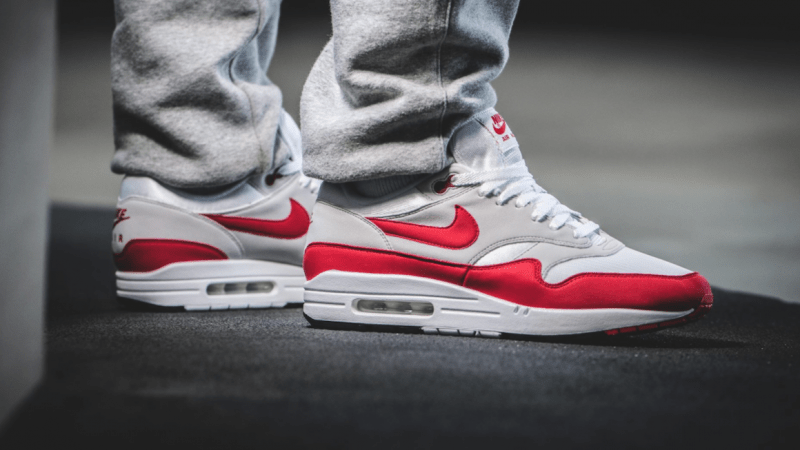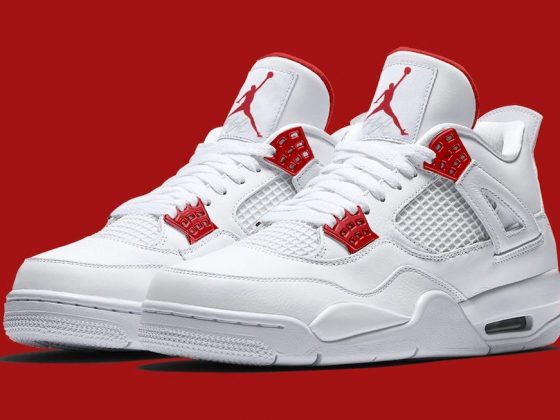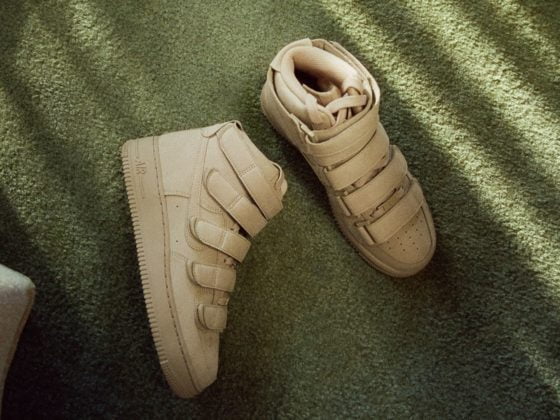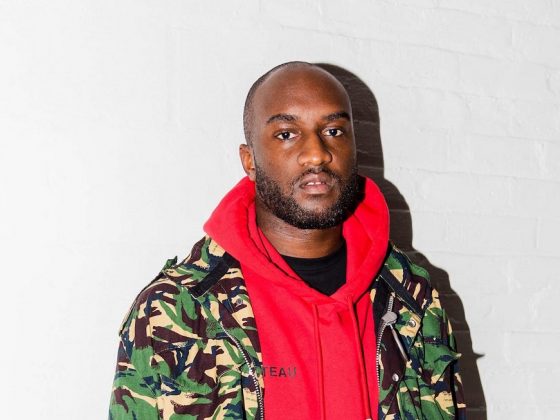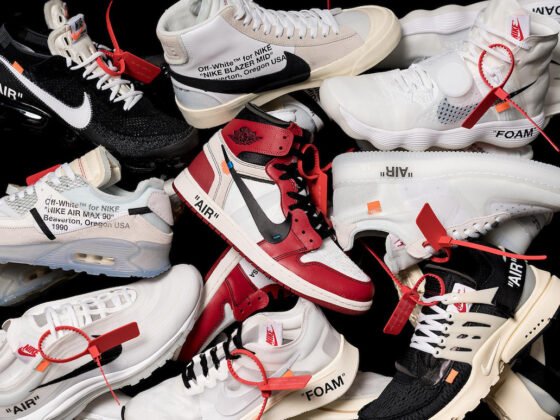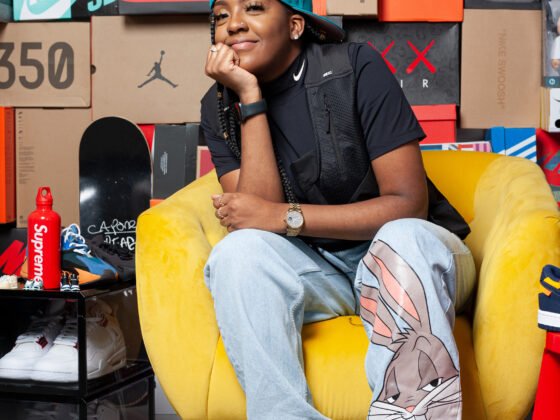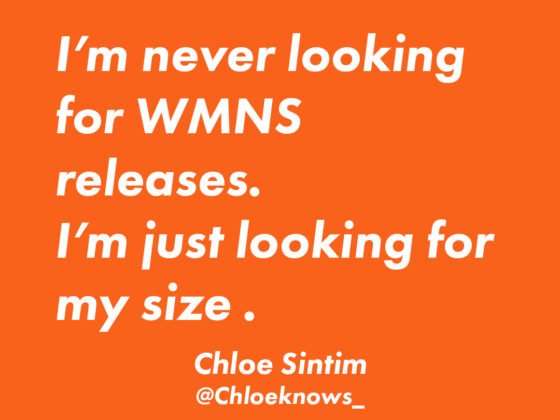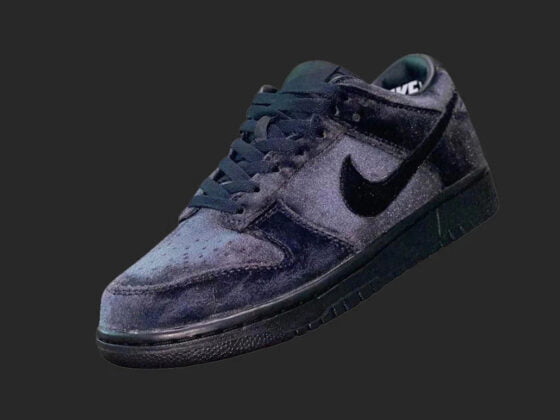In 1987, the sneaker world changed forever. Tinker Hatfield, along with M. Frank Rudy, created a piece of technology that was revolutionary. Visible Air had been invented. Wearers were able to see what it was that was inside their shoes. More importantly, however, it kickstarted one of the richest lines in sneaker history.
For over 33 years, Nike’s Air Max has transcended running and become an important part of pop culture. Numerous models have released, with countless collaborations and colourways releasing over the past three decades. With Air Max Day barely behind us, we thought it was time to pick the top 10 Air Max sneakers of all time.
As you can imagine the list is extensive. Picking our top 10 was tough. However, we feel that this list is all-encompassing, covering every notable colourway you need to know. Without further delay, let’s take a look at the top 10 Nike Air Max of all time.
Disclaimer: these are in no order!
Nike Air Max 1 OG (1987)
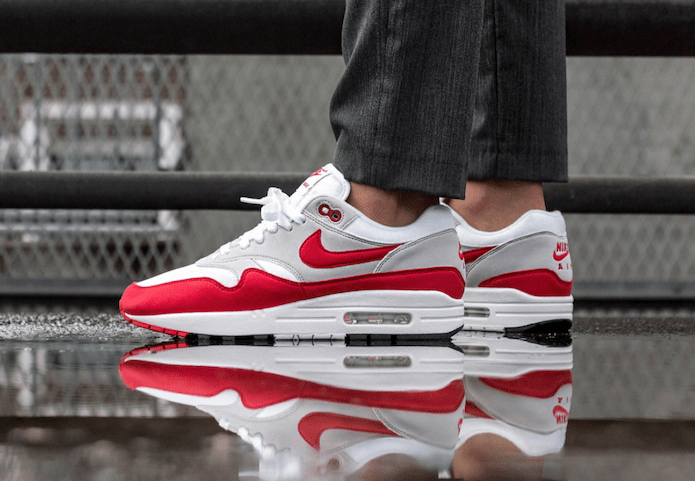
There was no way that we could go through the history of the Nike Air Max 1 and not mention the shoe that started it all.
On a trip to Paris, Hatfield saw the infamous Pompidou Centre, a building which is designed to show the construction on the inside placed on the outside. Very much a work of art or a scar on the face of Paris to whoever you ask, the Pompidou Centre inspired Hatfield to come back to Oregon and create the Nike Air Max 1; the first shoe where the Air unit was visible. Paying homage to the building that inspired him, Hatfield gave the shoe the now-iconic red, white and grey colouring comprised of suede and mesh materials.
Originally, Hatfield’s design was met with a lot of scepticism. Nike was failing in almost every athletic department besides basketball and the brand was reticent to gamble on Hatfield’s crazy design. However, Hatfield convinced them that the shoe would be a success with runner’s due to the large Air unit that provided a soft cushion for their feet. The visible Air unit itself was created by aeronautical engineer M. Frank Rudy, the father of Nike’s Air technology.
Over 30 years later and Nike’s gamble on Hatfield’s crazy design most certainly paid off and the OG Nike Air Max is still one of the best shoes. Nike’s Air Max line now makes up a key cornerstone for the business, going on to create other iconic shoes such as the Nike Air Max 90, Nike Air Max 95 and Nike Air Max 97. When the brand went on to reveal that they would be making more Nike Air Max 1 anniversary pairs of OG colourways, sneakerheads around the world rejoiced. However, the red Nike Air Max 1 holds a special place in all sneaker fanatics’ hearts. Even now, three decades later, it is safe to say that the Air Max 1 is the sneaker that gets sneaker fans excited.
Nike Air Max 90 “Infrared” (1990)
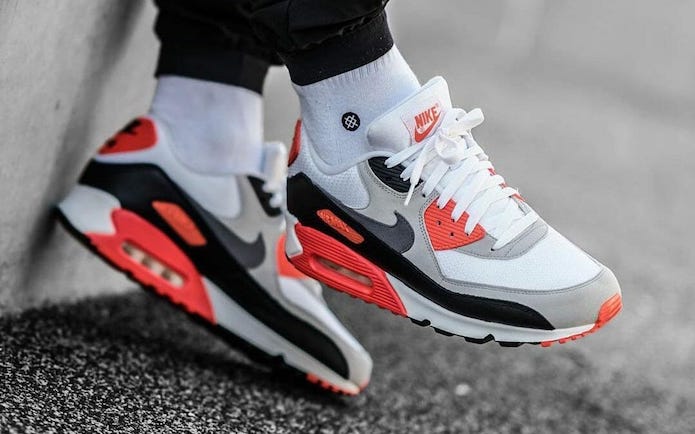
Tinker Hatfield’s design legacy at Nike spans over 30 years. In that time, he has designed countless classic sneakers, including the: Air Jordan 3 – Air Jordan 15, the Air Huarache and the Air Max 1. Following up the Air Max 1 would have been a tough task for any designer but, somehow, Hatfield managed to pull it off.
After the Air Max Light was released in 1989, Hatfield knew that he could not simply update the classic Air Max 1 again. A new design needed to be made and one that further built on the successful properties of its predecessors. The update would go onto become one of the most successful sneakers in the Air Max line.
Originally debuted as the Air Max III until 2000, the Air Max 90 merged together mesh, suede and leather. On its debut, the Infrared colourway proved to be one of the biggest selling sneakers of the year. White, black, grey and red helped to create a perfect sneaker for the serious runners and collectors interested in the shoe. Nike’s visible air technology had also remained, giving people a chance to see what made the shoes so comfortable.
Now, close to 30 years later, the shoe has remained one of the most important in history. Collaborations with the likes of Eminem, Virgil Abloh, Kaws, Patta, atmos and maharishi have made sure that the shoe has remained current.
atmos x Nike Air Max 1 “Elephant” (2007)
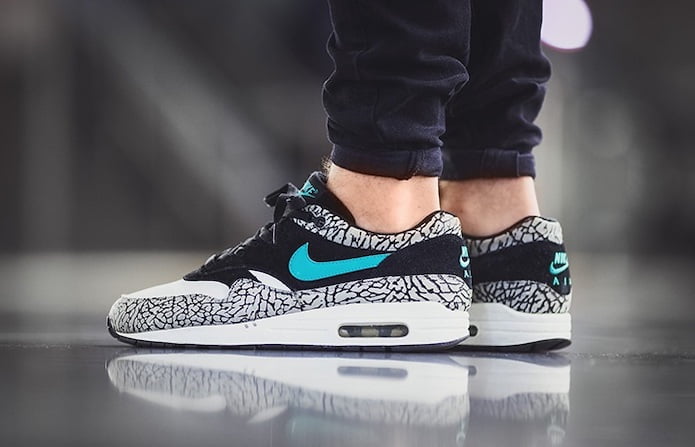
Originally released in 2007, and winning the Air Max Vote Back award in 2017, the Nike Air Max 1 atmos ‘Elephant’ is one of the Swooshes most recognisable colourways. Whilst the collaboration was not the first time that Nike had used the Jordan 3 Elephant print on another sneaker, it was certainly the most recognisable.
Featuring white tumbled leather, black leather and a beautiful jade Swoosh, the materials on the atmos Elephant are superb. Combined with a white midsole and simple grey sole, the print is able to be the star of the show in this shoe. This was, of course, not the first time that the Japanese retailer worked with Nike. The two came together in 2002 to create the Air Max 1 Safari, however, we think the Elephant just beats its predecessor.
Dave’s Quality Meats x Nike Air Max 90 “Bacon” (2004)
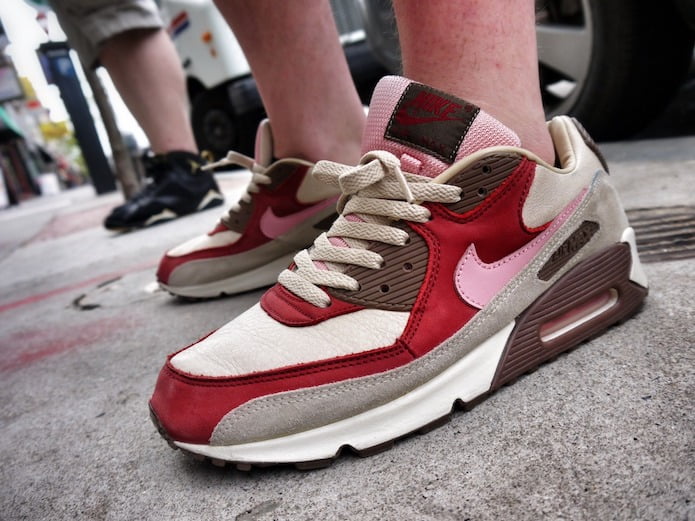
Whilst the name might have you think that Dave’s Quality Meats is a butcher in the heart of New York City, things could not be further from the truth. Founded by Dave Ortiz and pro skateboarder Chris Keefe, the store is inspired by Ortiz’ years of packing and tagging in the Big Apple’s meatpacking industry. The store uses meat hooks to hang its clothes and freezers to display its T-shirts.
Back in 2004, Nike worked alongside the fake butchers to create a meat inspired Air Max 90. Dubbed the ‘Bacon’, the shoe featured varying shades of dark red, pink and cream, all reminiscent of something you could find in real butchers. It became a big hit amongst the sneaker community and has rightly earned its place on this list.
The shoe even saw a re-release in the form of an Air Max 90 Current Huarache in 2009, giving fans a second chance to bring home the bacon.
Nike Air Max 95 “Neon” (1995)
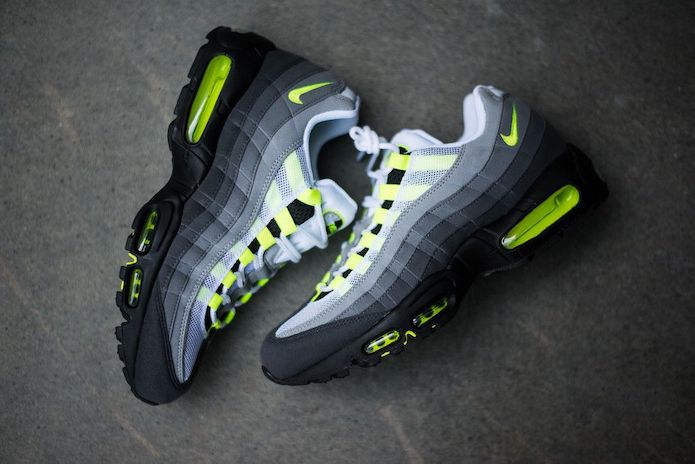
The OG. The classic. The one that started it all. Sergio Lozano, the designer of the Nike Air Max 95 (or 110s in London), might have had a controversial start to his Air Max lineage after Tinker Hatfield handed him the reigns, but his first effort at an Air Max runner has certainly stood the test of time. The Nike Air Max 1995 edition has now been written in the history books but at the time it wasn’t easy.
Taking inspiration from the human anatomy, with a lacing system inspired by a set of ribs, a spine-inspired outsole and a mesh and suede upper representing muscle fibres, the 1995 Air Max was like nothing the brand had released before. The Air Max 95 was the first pair in the line to utilise two air cushions in the forefoot and used air pressure technology to fit the curvature of the wearer’s forefoot.
The shoe’s colours proved just as iconic as its design inspiration. First released in grey hues paired with bright yellow accents, the Green Air Max 95s weren’t the first runner to employ a neon hue according to Lozano. ‘The neon yellow was not new. It was obviously part of our colour palette. It was also part of our heritage, you know? It’s part of Nike racing heritage.’
However, Nike was unsure that it would be a success due to the minimal branding and very different design to the previous Air Max models. In a 2012 interview, Hatfield even admitted that “ [Sergio] took it in a non-runner direction because clearly that upper was not meant for running.” The original Air Max 95 was much bulkier than its predecessors, something that Nike was conscious of. Once the shoe released, it was met with mixed reviews.
Runners (actual runners) praised the shoe for its comfort, response and feel in comparison to Nike’s more lightweight models. In terms of a running shoe, it was a huge success. For sneakerheads, however, it took a while for the Air Max 95 to shine. Now though, the Air Max 95 Neon is a staple in every collector’s arsenal.
Parra x Patta x Nike Air Max 1 “Cherrywood” (2010)
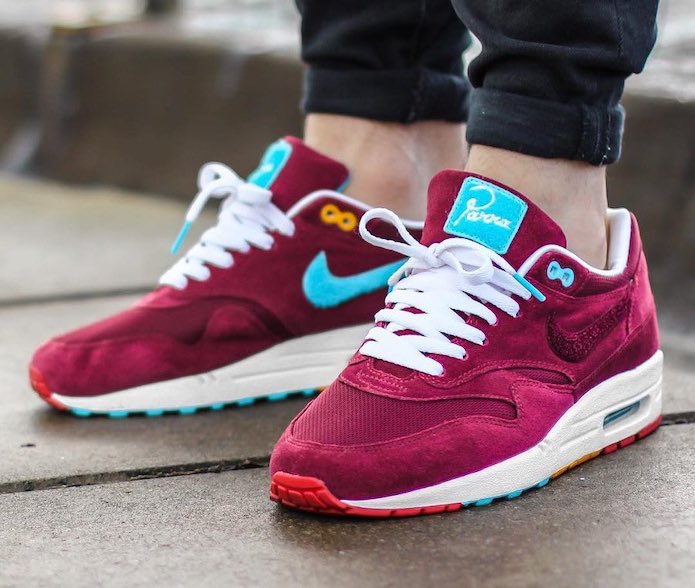
Parra and Patta’s history of collaborating with Nike began with this very shoe. In 2009, the two Dutch powerhouses joined forces to create, in this writer’s humble opinion, the greatest Air Max 1 of all time.
As we’ve already mentioned, Patta looked to celebrate its fifth anniversary with a slew of Air Max 1 releases. However, in 2010, Parra began to share images of the Cherrywood Nike Air Max 1. Many sneakerheads around the world began to get excited yet frustrated at the lack of details about the shoe release.
Later on in the year, Patta x Parra finally revealed the details about their collaboration with Nike. Limited to just 258 pairs, this Air Max 1 is as limited as it is beautiful to look at. Combining Parra’s signature colouring of maroon and turquoise and Patta’s famous fun take on Nike collaborations, the result is this; the Nike Air Max 1 ‘Cherrywood’ Patta x Parra collaboration. Coming as both men’s Air Max 1 and women’s Air Max 1, this shoe is simply beautiful.
Patta x Nike Air Max 90 “Homegrown” (2006)
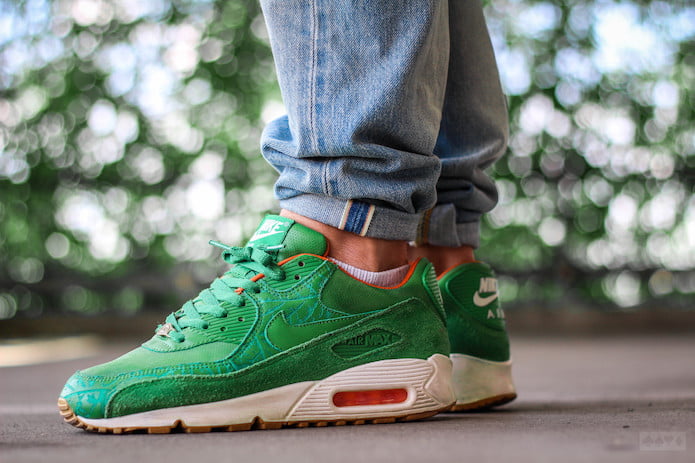
All Air Max 90s colourways have a story but fewer are better than that of the 2006 Homegrown Patta colourway. Amsterdam is steeped in a rich history, with beautiful museums, parks, canals and people. However, it wasn’t the above that Nike was interested.
The Swoosh teamed up with Dutch retailer Patta and State Magazine, popular hip-hop publication, to create this limited edition Nike Air Max 90. Tipping the cap to Holland’s relaxed laws around cannabis, the shoe, aptly called the ‘Homegrown’ was a homage to all things Cheech and Chong. The colourway which features ‘grass green’ and ‘orange blaze’ insinuated big things.
The shoe was an instant sellout, making it one of the top 10 Air Max 90s on the planet and one of the most popular Air Max 90s for collectors to try and get hold of. If you’re looking to get your hands on a pair, you better have the green to match the shoes.
Parra x Nike Air Max 1 “Amsterdam” (2005)
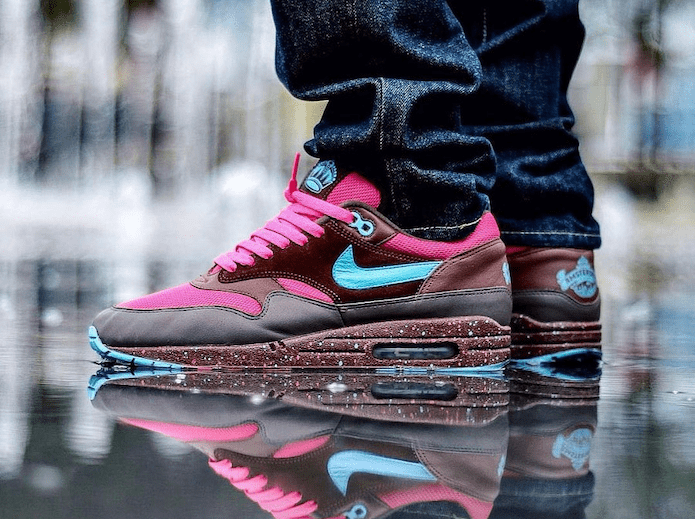
The Parra Nike Air Max is one of the best shoes to ever grace the world of sneakers. Having already mentioned the Albert Heijn’s, we couldn’t not mention the shoe that went onto release instead. The 2005 Nike Air Max 1 “Amsterdam” by Parra is a shoe that has its fair share of history, hype and hunting by sneakerheads around the globe.
Using a leather of unparalleled quality, a bolder mesh pattern and suede of the highest degree, the Amsterdam Air Max 1 is one of the best to ever release. Staying true to his roots, Parra uses his signature brown, pink and turquoise to bring the shoe to life. With a rumoured 250 pairs to be in existence, and an even rarer friends and family pair with Parra’s signature inscribed on the mudguard, this is a pair that is for true sneakerheads only.
Nike Air Max 97 “Silver Bullet” (1997)
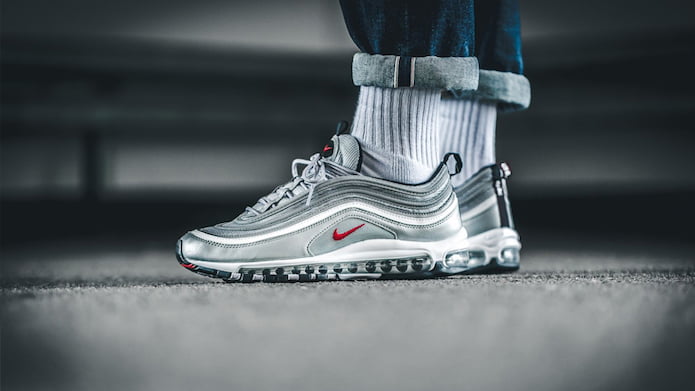
Following on from the success of the Nike Air Max 95 was going to be tough. The shoe was an instant hit and it’s follow up model, the Air Max 96, was less so. Hoping to use the same award-winning formula as the Air Max 95, the Air Max 96 replaced the traditional gradient upper for a more bold option. The combination of blue leather and grey mesh on the OG should have been a hit, but it was a flop. Sensing that the Air Max line was in trouble (again), Nike needed another big hit.
Christian Tresser, a footwear designer working on Nike’s football boot range, had gotten the call that Nike wanted him to design the next Air Max. After the successful innovation of the Air Max 95, Nike knew that digging into old school Air Maxes was not going to work. Sitting down with Nike to discuss the process, Tresser explained that: “The nature of it was water dropping into a pond. The water would drop and radiate out to the Air unit”.
The Nike Air Max 97 was also the first Nike sneaker to use a completely visible Air unit: a monumental achievement for both Tresser and Nike. The shoe was met with monumental success, having been worn by the likes of Victoria Beckham, Ronaldo (R9) and many more. In countries like Italy, however, the Air Max 97 became a staple part of everyday life. In 2016, Italians were even awarded their own Air Max 97 as a thank you for their love of the silhouette.
Nike Air Max Plus Tn “Sunset”
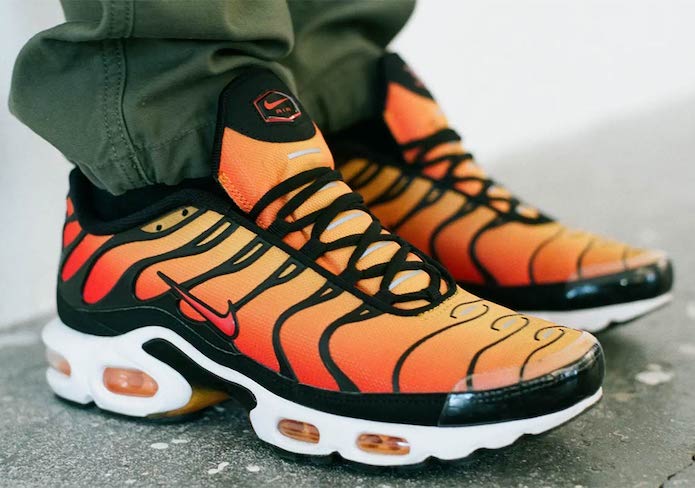
As 1998 kicked off, things were looking up for Nike’s Air Max range. The Nike Air Max 98 had not been one of the most successful sneakers for Nike. Although now the sneaker is one of the most popular, back in the late 90s, it was not. It had used the same sole as its AM97 big brother. However, the change in the upper was not for everyone. Just like the Air Max 96 following the Air Max 95, many were left disappointed with the Air Max 98.
When Sean McDowell started at Nike, he landed a dream job. However, he was also extremely new to the rigid Nike design process. When he pitched a shoe exclusive to Footlocker, his lack of experience showed. The Florida native was keen to create a sneaker that represented the sunsets he was so used to watching. The shoe, which was called the Nike Air Max Plus (or Tuned Air aka Tn), was not looking likely to get released.
McDowell had presented the shoe to his colleagues, many of which said it would never get approved. His lack of experience, however, was also what led him to create a sneaker that he wanted to wear. In fact, he had never even drawn a Swoosh, something that became one of the Tn’s most distinctive features. McDowell explained to Nike that “the shape is a little bit off, and I put the border on the inside when technically all the brand guidelines say to go outside.”
Final Thoughts
So, what is Nike Air Max? Simple. Nike Air Max is one of the most important lines in footwear history. The commitment to push visible air to its limits has seen more than 75 sneakers produced over the past 33 years. As sneakerheads around the world get ready to celebrate the Air Max 90s 30th birthday and the Air Max 95s 25th, it’s important to recognise the historical importance of Nike’s Air. As Tinker Hatfield put it:
“The mid-’80s was a period of transition from a more formalized hierarchy to a looser, street-based, more inspirational form. We at Nike were part of that wave, and I just happened to be a designer doing it from a footwear perspective when nobody else was.”
Over three decades later, Nike is still doing just that.



